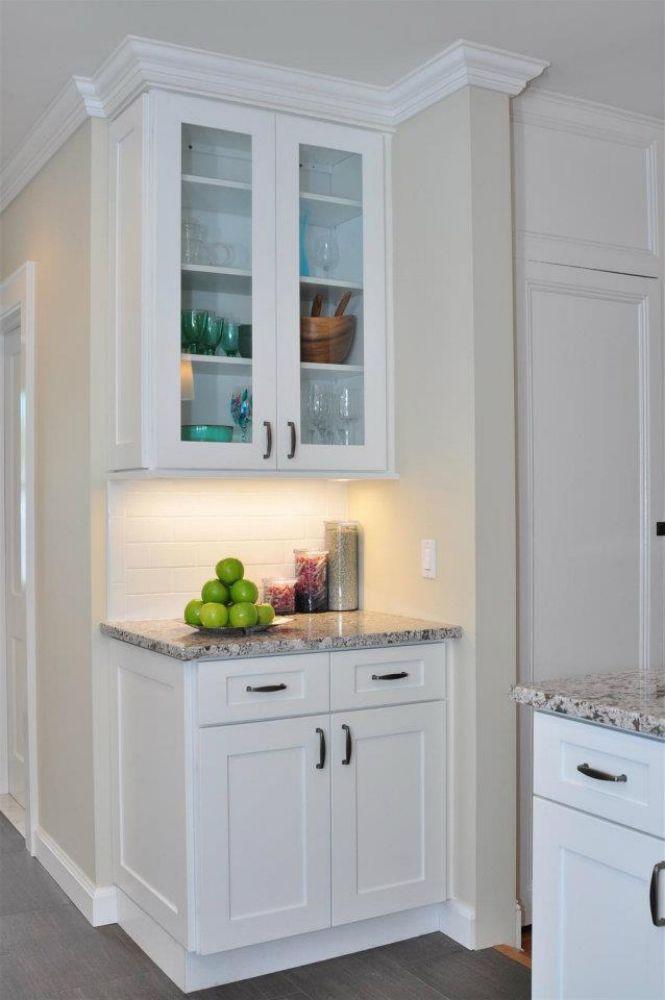Introduction to Forevermark Petit Sand Cabinets
Forevermark Petit Sand cabinets are a popular choice among homeowners and designers because of their soft neutral color, durability, and ability to complement both modern and traditional kitchen styles. With their versatile appearance, these cabinets can instantly elevate the look of a kitchen or bathroom while maintaining a clean, sophisticated aesthetic. However, as with any cabinetry, proper maintenance is essential to ensure longevity and preserve their beautiful finish. Cleaning Forevermark Petit Sand cabinets requires knowledge of which products are safe to use, as using the wrong cleaners can cause discoloration, scratches, or even long-term damage.
This article will explore safe cleaning practices for these cabinets, recommended products, cleaning techniques, and habits to avoid. By the end, you’ll have a clear understanding of how to keep your cabinets looking pristine for years to come.
Why Cleaning Forevermark Petit Sand Cabinets Requires Care
Unlike stainless steel or laminate, wood and wood-based finishes can be sensitive to harsh chemicals and abrasive cleaning methods. The Petit Sand finish is designed to highlight a smooth, light-toned surface that can show dirt, grease, and fingerprints more easily than darker shades. Because of this, homeowners might be tempted to use stronger products to remove buildup, but doing so can strip the finish or damage the protective coating.
Careful cleaning not only maintains the aesthetic but also preserves the structural integrity of the cabinets. Understanding why certain products are safe while others are harmful is the first step in proper cabinet care.
Safe Everyday Cleaning Products
When it comes to daily or weekly maintenance, the safest products are mild and gentle. For Forevermark Petit Sand cabinets, the following options are recommended:
-
Warm Water and Mild Dish Soap – A simple solution of water mixed with a few drops of mild dish soap is one of the safest ways to clean cabinets. It removes grease and dust without being too harsh.
-
Microfiber Cloths – These cloths are gentle on surfaces, reduce streaking, and trap dirt effectively without scratching the finish.
-
Vinegar and Water (Diluted) – A mix of one part vinegar to three parts water can be used occasionally for spot cleaning, especially for grease. However, it should not be used daily since vinegar is acidic.
-
Cabinet-Safe Wood Cleaners – Some commercial products are specifically formulated for wood cabinetry, offering a balanced cleaner that won’t harm the surface.
These products are safe for routine use and can be relied on for quick wipe-downs.
Products to Avoid on Forevermark Petit Sand Cabinets
Just as important as knowing what to use is knowing what not to use. Certain products may seem effective at first but can cause permanent damage to cabinets. Avoid:
-
Bleach or Ammonia-Based Cleaners – These chemicals can discolor the finish and break down protective coatings.
-
Abrasive Scrubbing Pads – Scouring pads or steel wool will scratch and dull the surface.
-
Oil-Based Soaps – While marketed as wood cleaners, they can leave residue that dulls the finish over time.
-
All-Purpose Sprays with Strong Chemicals – Products containing strong solvents can erode the finish and leave streaks.
By steering clear of these cleaners, you protect the natural beauty of Petit Sand cabinets.
How to Clean Grease and Stubborn Stains Safely
Kitchen cabinets often come into contact with grease splatters, especially near the stove. Stains from food, oil, or fingerprints can be more stubborn. Safe methods for removing them include:
-
Soap and Warm Water First – Start with the gentlest method before escalating.
-
Baking Soda Paste – For tougher stains, a paste of baking soda and water applied gently with a microfiber cloth can help lift residue. Always wipe with clean water afterward.
-
Diluted Vinegar Solution – Use occasionally for greasy spots, but avoid leaving it on the surface too long.
-
Rubbing Alcohol for Sticky Residue – Apply sparingly with a cotton ball for things like adhesive or gum, then rinse immediately.
These targeted methods help preserve the finish while effectively tackling buildup.
Best Practices for Routine Cabinet Maintenance
Beyond cleaning products, routine care practices can extend the life and appearance of your Forevermark Petit Sand cabinets:
-
Wipe Spills Immediately – Liquids like coffee, wine, or sauces should be cleaned right away to prevent staining.
-
Dust Regularly – Use a dry microfiber cloth to keep dust from accumulating.
-
Use Gentle Motions – Always clean with soft circular motions rather than aggressive scrubbing.
-
Avoid Excess Moisture – Never soak the cabinets; excess water can seep into joints and cause warping.
-
Dry After Cleaning – After wiping down, always dry the cabinets to prevent lingering moisture.
These practices, combined with safe products, help keep cabinets in pristine condition.
Deep Cleaning Recommendations
While daily and weekly cleaning is important, a deeper cleaning every few months ensures cabinets remain free of grime and buildup. Safe deep-cleaning methods include:
-
Remove Hardware for Thorough Cleaning – Taking off handles and knobs allows you to clean hidden areas where grease often collects.
-
Use Mild Wood Cleaner – A commercial wood cleaner formulated for cabinets can restore shine.
-
Inspect for Wear and Tear – During deep cleaning, look for chips, scratches, or loose hinges that may need repair.
-
Polish with Non-Wax Conditioner – A conditioner designed for wood cabinetry can provide a subtle protective layer without leaving a waxy buildup.
Deep cleaning is the opportunity to restore cabinets while keeping them functional and beautiful.
Eco-Friendly Cleaning Alternatives
For homeowners looking for more sustainable cabinet care, eco-friendly cleaning options work just as well for Forevermark Petit Sand:
-
Castile Soap Solution – A plant-based soap diluted with water makes for an effective yet gentle cleaner.
-
Lemon Juice (Diluted) – While slightly acidic, diluted lemon juice can be used occasionally for natural grease-cutting.
-
Reusable Microfiber Cloths – Instead of paper towels, microfiber cloths reduce waste and clean more effectively.
-
Homemade Cleaners – Mixing water with a few drops of essential oils and mild soap can serve as a safe and refreshing cleaner.
Eco-friendly cleaning ensures safe practices not only for the cabinets but also for the environment.
Common Mistakes to Avoid When Cleaning Petit Sand Cabinets
Even when using safe products, mistakes in technique can cause unnecessary damage. Avoid these errors:
-
Using Excessive Water – Letting water pool or soak into cabinets leads to swelling and damage.
-
Skipping Drying Step – Moisture left on cabinets can dull the finish and attract dust.
-
Not Testing Cleaners First – Always test a small hidden area before applying a new product widely.
-
Using Too Much Force – Aggressive scrubbing can wear down the finish.
Learning what not to do is just as important as learning what works best.
Conclusion
Forevermark Petit Sand cabinets are known for their beauty and versatility, but keeping them clean requires mindful care. Safe cleaning products like mild dish soap, warm water, and microfiber cloths are reliable for everyday use, while natural alternatives and cabinet-safe commercial cleaners can be used for deeper cleaning. Avoiding harsh chemicals, scrubbing pads, and excessive moisture ensures the finish remains intact. By combining safe products with proper techniques and routine maintenance, homeowners can protect their investment and enjoy the timeless elegance of Forevermark Petit Sand cabinets for years to come.
Frequently Asked Questions
Q1: Can I use disinfectant wipes on Forevermark Petit Sand cabinets?
A: Most disinfectant wipes contain strong chemicals that may harm the finish. If needed, use them sparingly and rinse the surface with water afterward.
Q2: How often should I deep clean my cabinets?
A: A deep clean every three to four months is recommended to remove grease and buildup in hard-to-reach areas.
Q3: Is vinegar safe for daily use on these cabinets?
A: Vinegar is acidic and should not be used daily. It’s better for occasional spot cleaning.
Q4: What’s the best way to prevent grease buildup near the stove?
A: Wipe cabinets regularly after cooking and consider using a range hood to reduce airborne grease.
Q5: Can I polish Forevermark Petit Sand cabinets?
A: Yes, but use only non-wax, cabinet-safe polish or conditioners designed for wood cabinetry to avoid residue buildup.

